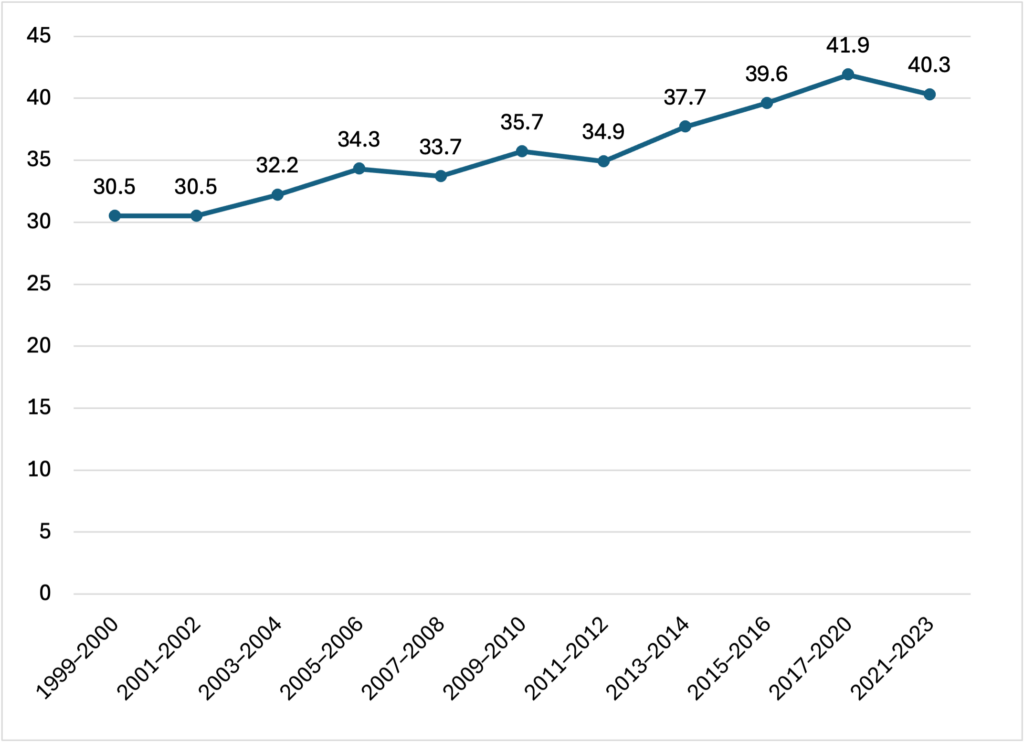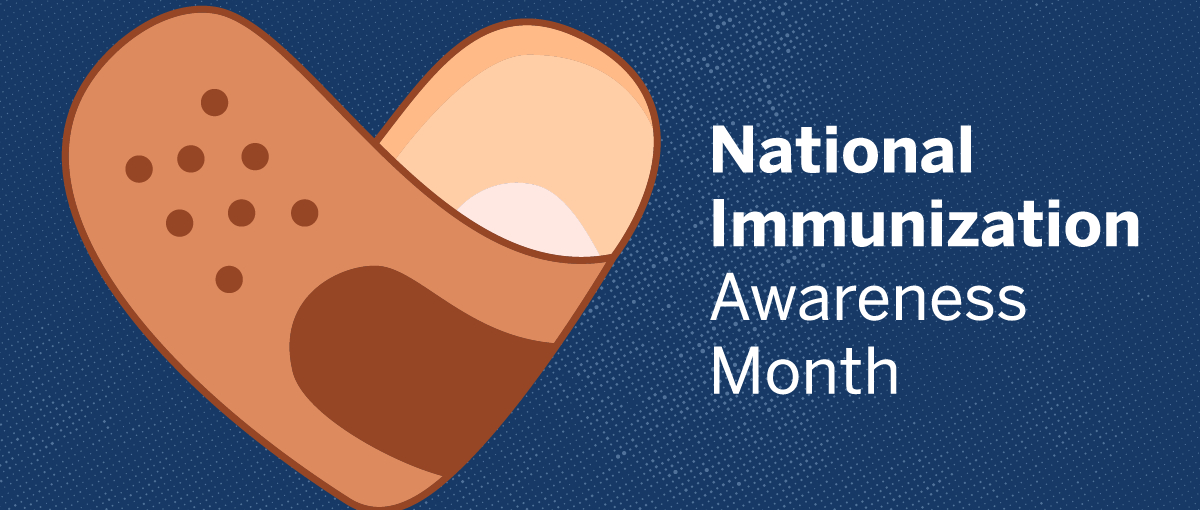Stabilization of Obesity Rates is Welcome News but More Investment in Prevention Policies and Programs is Needed
(Washington, DC – October 10, 2024) – Over the last two decades, obesity has increased across the country in both adults and children. Newly released National Health and Nutrition Examination Survey (NHANES) data from 2021–2023 find that 40.3 percent of adults had obesity, which is slightly lower than the previous data (2017–2020). This is tentatively positive news, as it suggests a possible stabilization of the overall adult obesity rates in the United States in recent years— though the rate is still much higher than prior decades.
Percent of Adults Ages 20 and Older with Obesity, 1999-2023

Source: NHANES
Obesity is a complex disease that is influenced by many factors beyond personal behavior. Reversing the nation’s obesity crisis requires sustained investment in multidimensional strategies and policies, that are tailored for population groups and regional differences. As TFAH’s September 2024 State of Obesity report explores, there are a number of evidence-based policies and programs that improve nutrition and support healthy eating, and help to reduce rates of obesity and chronic disease.
This includes important policy progress, like:
- Improving nutritional quality of the food supply and diets by prohibiting trans fats in foods, instituting voluntary guidance to reduce sodium in commercial foods, and taxing sugar sweetened beverages to reduce added sugar consumption.
- Empowering consumers through better labeling and education, like improved Nutrition Facts labels, new restaurant menu labeling, and family education programs.
- Increasing nutritional quality and access in schools, institutions, and nutrition programs, including aligning child nutrition programs and the Special Supplemental Nutrition Program for Women, Infants, and Children (WIC) with the Dietary Guidelines for Americans.
(See State of Obesity report pages 14–17 for more on these nutrition and food environment policies.)
Looking forward, we need to build on these initial steps to ensure that adult obesity rates continue to trend in the right direction, including critical policies like:
- Increase federal resources for evidence-based, effective efforts that reduce obesity-related disparities and related conditions including funding for CDC’s chronic disease and obesity prevention programs, such as the State Physical Activity and Nutrition, Racial and Ethnic Approaches to Community Health, and Healthy Tribes
- Decrease food and nutrition insecurity while improving the nutritional quality of available foods in every community by, among other activities, providing healthy school meals for all students and maintaining progress on the final 2024 school nutritional meal standards. In addition, Congress should expand access to nutrition support programs such as the Supplemental Nutrition Assistance Program (SNAP) and WIC, and increase the value of their benefits.
- To help consumers make informed choices, the Food and Drug Administration should swiftly implement a front-of-package label that will help people more easily understand the nutrients of concern in packaged foods.
(See State of Obesity 2024 recommendations on pages 67–76 for additional measures policymakers should take to continue to make progress in efforts to help all Americans maintain a healthy weight.)
“It is welcome news that the latest NHANES data suggest the overall adult obesity rate in this country has not been increasing in recent years,” said J. Nadine Gracia, M.D., MSCE, President and CEO of Trust for America’s Health. “However, much more needs to be done to address this health crisis. This is a critical moment to increase our efforts: boost and sustain investment in proven obesity prevention policies and programs and build healthier communities where everyone has access to affordable, nutritious foods and safe places to engage in physical activity.”
The new NHANES report also highlights the link between obesity and socioeconomic status. Like previous years, the new data show clear differences in obesity prevalence by educational attainment, with lower obesity rates for adults with a bachelor’s degree (31.6 percent) than in adults with less education (high school diploma or less (44.6 percent) and those with some college (45.0 percent). This underscores the critical role of policies and programs that boost accessibility and affordability of healthy food for all Americans.
Notably, the newly released report does not include data by race/ethnicity, though we hope that will be released later this year. Previous years’ data have shown large differences in obesity prevalence and trends by race/ethnicity. Understanding trends across different racial/ethnic groups, and if disparities are increasing or decreasing, is essential for a complete picture and successful policy response.
See TFAH’s State of Obesity 2024: Better Policies for a Healthier America report for more information about obesity rates and solutions.




